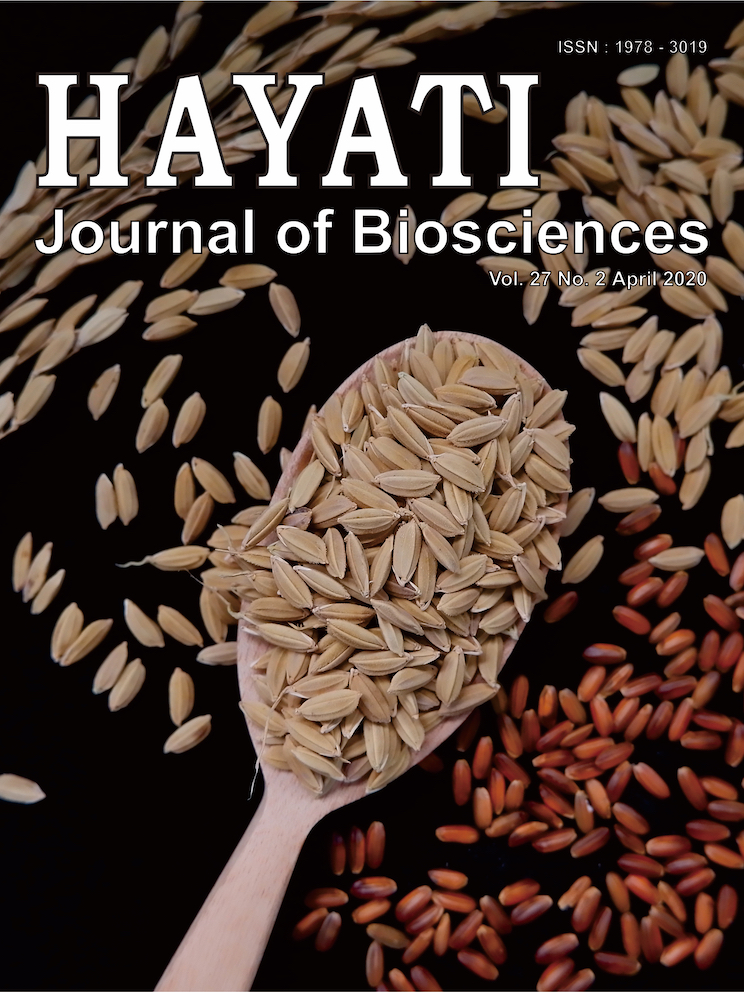Flight Activities and Pollen Load of Lepidotrigona terminata Smith (Apidae: Meliponinae)
Abstract
Worker bees actively forage to supply colony necessity i.e., pollens, nectar, and resin. Flight activities of the worker bees are influenced by food availability and environmental conditions. This study aimed to measure flight activities of Lepidotrigona terminata in terms of leaving and returning to the nest (including carrying of pollen and pollen type) and their relation to environmental conditions. The observation of flight activities of L. terminata were conducted from August to December 2016, at 07.00-17.00 for 1 minute with 1 hour interval. Pollen load and pollen types were analyzed by the acetolysis method. Flight activities of leaving and returning to the nest were lower at 07.00-08.00 (1 individual/min) and at 16.00-17.00 (2 individuals/min). However, the peak activities occurred at 10.00 until 13.00 (8 and 6 individuals/min for leaving and returning to the nest, respectively). Temperature and light intensity were positively correlated with flight activities of bees that carried nectar and resin, as well as leaving the nest without garbage. The returned workers averagely carried 32,696 pollen grains from four pollen types. Based on selection index values, this stingless bee species mostly preferred Araceae (ⱳi=1.522) plant family for pollen resources to others, Anacardiaceae, Aceraceae, and Acanthaceae (x2=39.32, p<0.01).
Downloads
HAYATI J Biosci is an open access journal and the article's license is CC-BY-NC. This license lets others distribute, remix, tweak, and build upon author's work, as long as they credit the original creation. Authors retain copyright and grant the journal/publisher non exclusive publishing rights with the work simultaneously licensed under a https://creativecommons.org/

























.png) IPB University
IPB University Department of Biology
Department of Biology The Indonesian Biological Society
The Indonesian Biological Society 

